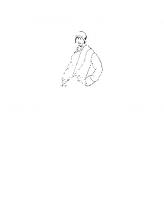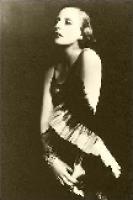Tamara de Lepicka
231 84 5MB
English Pages [81]
Untitled02
Untitled03
Untitled04
Untitled05
Untitled06
Untitled07
Untitled08
Untitled09
Untitled10
Untitled11
Untitled12
Untitled13
Untitled14
Untitled15
Untitled16
Untitled17
Untitled18
Untitled19
Untitled20
Untitled21
Untitled22
Untitled23
Untitled24
Untitled25
Untitled26
Untitled27
Untitled28
Untitled29
Untitled30
Untitled31
Untitled32
Untitled33
Untitled34
Untitled35
Untitled36
Untitled37
Untitled38
Untitled39
Untitled40
Untitled41
Untitled42
Untitled43
Untitled44
Untitled45
Untitled46
Untitled47
Untitled48
Untitled49
Untitled50
Untitled51
Untitled52
Untitled53
Untitled54
Untitled55
Untitled56
Untitled57
Untitled58
Untitled59
Untitled60
Untitled61
Untitled62
Untitled63
Untitled64
Untitled65
Untitled66
Untitled67
Untitled68
Untitled69
Untitled70
Untitled71
Untitled72
Untitled73
Untitled74
Untitled75
Untitled76
Untitled77
Untitled78
Untitled79
Untitled80
Untitled81
Blank Page
Recommend Papers

- Author / Uploaded
- Nerét Gilles
File loading please wait...
Citation preview
Gilles Neret
TAMARA DELEMPICKA 1898-1980
Benedikt Taschen
1�1'11,
FRONT COVER: Detail from:
1931
Oil on canvas. 41 x 32.� cm Private colleclion
(..., ill us. p. 55) FRONTISptECF.: Tamara de L.empicka in lhe 1930s
Ph01o: Cec il Bealon
€1 1992 Benedikt Taschcn V�rlag GmbH Hohenzollemring �3. 0-5000 K m n I 0 1991 Baroness KilettctJe Lcmpid;.a-Fm.hall. Hnu:-.tun Edited and pnxluced hy Sully Bald. Cnlu,;nc Cm·er dc!ooip.n by Peter Fcicrabcnd. Berlin Engli),h tran),laliun hy Michacl S'"·uflil. Lc\cril.uscn Prinlt.'tJ in Gcmtany ISHN J-X:?:!K-055�-0
GB
Contents
6 Cool, disconcerting beauty: this woman is free ...
10 La belle Polonaise
28
T he art of the Caesars
50 Bedtime stories: the beautiful young woman and the ugly old dwarf
62 Success: money and a title
74 "She is such fun, and her pictures are so amusing"
78 Tamara de Lempicka 1898-1980: Chronology 80 Notes
Cool, disconcerting beauty : this woman is free ...
Ambiguous, for sure. Free, without a doubt. A legend, quite cer tainly. Tamara de Lempicka, la belle Polonaise, the star of the inter war years, had all that it took to symbolize her era. The el ite of her era. to be sure, those who frequented the Ritz in Paris or the Grand Hotel in Monte Carlo, what today we should cal l the jet-set. As recently as 1978, the "New York Times" was still calling her the "steely-eyed goddess of the automobile age". And indeed, her most famous pai nting, a self-portrait entitled Autoportrait or Tama ra in the Green Bugatti (illus. p. 6), reveals something of the rela tionship Tamara had with machines, be they of steel or flesh and blood . . . Woman-automobile, automobile-woman . . . where does one begin and the other end? What sort of relationships do they have with each other and with men? It is difficult to be sure. Just to pose the question is to raise the issue of the whole ambivalence to which Ta mara de Lempicka's work bears witness in such abundance. And al ways, one comes up against that sense of displacement which re sults when, having thought one has solved the mystery, one finds one has to start from the beginning all over agai n : the initial data were simply wrong. Thus in real ity Tamara never possessed a green B ugatti, but only a little bright yellow Renault. What counts, she said, is that "I was always dressed like the car, and the car l ike me".' One imagines Tamara as the unchal lenged star of a fashion con test stepping out of the car and presenti ng herself to a jury whose members could incl ude the Great Gatsby, Hemi ngway or Coco Cha nel, and then in an elegantly superior attitude - one hand placed ca sually upon the bonnet - posing in front of the vehicle. Perfect har mony between woman and object. the one supplied with the name of a great couturier, the other with the emblem of i ts maker and de signer. Customari ly we expect an exchange of roles between the two elements of this tableau : the woman becomes an object, in a so ciety like ours based on the concept of possessions, while the auto mobile appears as the projection of the virile potency of the man who created it. The underlying symbolism presses itself upon one in no uncertain terms: by placing her hand upon the bonnet. beneath
Tamar.t de Lcmpi1.:ka i n the 1930s
AuloJmrtrair tlimwra i11 lilt" Grc·t'll Huga11i1. 11)�5
wuotl. 35 x 26 l'lll Pri,·ah: �,.·,,Jk"t.·ti'm
Oil un
Ptmruil of Marqui.\· Sommi. 1925 Oil on canvas, 105 x 73 cm Private collection
which 400 horse-power is just waiting to be ignited, the woman - a graceful appari tion in her chic Twenties costume - is proclaiming. in a sense, that she is subordinating herself to a force which fi nds one of its most elemental forms of expression in the impetuousness of the motor. S uch an interpretation, particularly in Tamara's case, overlooks the fact that the car is also a symbol of women's emancipation. The machi ne is namely in the power of its mistress, who can impose her will upon it, spur it on to crazy feats of performance, turn it into a docile slave. A Tamara de Lempicka takes it completely for granted to seize upon a symbol of strength. represented by the car's engine, and to re-deploy it in such a manner as to make it work exclusively to her advantage. From this we can draw the conclusion that the relationship be tween our heroine and not only the car, but also men, and women too, is suspect at the very least. An attitude never total ly free from a certai n horror, which can be glimpsed behind the seemingly imma culate fa.yade. Are the others, she asks herself, irrespective of their sex or their species, are they allies or rivals? Can one not change from feminine to masculine depending on whether one is an accom pl ice or a chauffeuse, a lover or a mistress, depending on one's own degree of femininity ... or masculinity? After all, every human being, man or woman, is a subtle mixture of the two. The life and work of Tamara de Lempicka are impregnated by this subtle m ixture. They are also a reflection of it, as in a di storting mirror. It is not just by chance that her "Auto-Portrait" portrays her with an automobi le. The latter functions as a piece of adored ma chinery, as a simile of love, capable on both counts of bringing about a salutary change in the soul of a mortal being. This ambivalence, halfway between a mathematical formula and a magic spell - Tamara played upon it to excess. But beware: like all the famous heroines - from Hadaly in Yilliers de L'lsle-Adam's novel "L' Eve future", to E.T.A. Hoffmann's Coppelia. from Descar tes ' "Francine" ( that stupendous automation) to the "bachelor ma chines" dear to the hearts of the surreal ists - Tamara is also capable of strangling her rival or of di spatching the hero to the same grisly end as Prometheus suffered. One does not rob the gods of the fire of knowledge or of science with impunity. just to breathe life into vo luptuous fairies, disquieting lords whom one loves and paints. Docile mistress or pretty strumpet, obedient pet or wild beast red in tooth and claw. Tamara. like her automobile double, can lead her lovers, male or female. her creature, her master or her mi stress, to wards ecstasy. escape. liberty. obl iv ion . . . or else against a tree. to the torments of hel l . It w a s not unusual. fix example . for another woman. fascinated by this symbiosi s of lady-driver and automobi le, to remark to her:
"You look so wonderful in your car that I'd love to make your ac quaintance . .
This. incidentally. was j ust what happened on the occasion of her first meeting with the cditress of the German fashion journal ""Die Dame··. who commissioned the ··Auto-Portrait"" for the cover-page of her magazine. As a result. the pai nting achieved fame overnight. hailed as the image of the modem woman . As time went by. it came to be seen as the perfect portrait of the age. From then on. the artist was identified with machi nery. The Hollywood Theater even used the picture as the poster for the play "Tamara: a Livi ng Movie··. I n .. ··Das M agazin Lempicka was compared t o a beautiful Brunhi lde: she and her car embodied the double aspect of a woman at once vo luptuous and superior. As l ate as 1974. ""Auto-Journal"" hail ed Tama ra in The Green Bu!{alli as the true portrait of the emanci pated woman who knows how to get what she wants. ··she is weari ng gl oves. and a hel met. She is inaccessible. a cool. disconcerting beauty. behi nd which a formi dable be ing can be glimpsed- this woman is free!""'
Oil on coun-a:.. K2 Pri\"at��..·t•lkl·ti'm
x
1 .'\0 cm
'"I l i\"c �m thl' fringL' of �t11,:icty. and thl· ruk)l, of
nonn;ll ,n,,:j �,.·ty h T�m FriendJ. 19.:!3 Oil
on canvas.
1:\0 x 160l·m
Geneva. MusCe d' An Mod�me. Pelil Palai�
Th< Mm/d. 1925 O i l on canvas. I I 6 Privale colleclion
x
7:.
Lm
lain, her teacher Andre Lhote and the Clemenceaus. The artist's beauty and elegance and renown formed the centrepoint of a large, fluctuating circle: around her, personal ities revolved like celestial bodies - large and small, bri ll iant or extinct. A number of reporters fell into ecstasy on seeing her (and d' Annunzio, for his part. defi ned her as "the woman of gold"). They were carried away by her hands, her hair, her wardrobe. To one Fernand Vallon, who vi sited her at the time of her Andromeda (illus. p. 27), she appeared "in ecclesias tical purple, with emeralds as deep as l akes : blonde, sumptuously blonde, with ·exquisite hands. adorned with blood-red fingernai ls' she would move aside large canvasses ' reminiscent of grey velvet, like her wallpapers .' " A reporter for the "Monterey Herald", who was granted an interview in 1 94 1 , had to catch his breath when con fronted with the apparition of this ' tal l, thin something', with 'red gold hair falling luxuriantly over her shoulders ' . Everyone was amazed, and had to fall back on hyberbole, like a certain nameless commentator in the magazine "These Women", who had the oppor tunity to see her stretched out on a heavenly divan, in a robe of white satin. decorated, so we are told, with ' wool ly. white marabou feathers ': the same chronicler goes on to remark that Tamara is tal l (which is true), as well as being slender and smooth. but provided in the appropriate places with the necessary curves."' This mood was still reflected by Franco M aria Ricci. who con fesses, fu ll of nostalgia: "One day, in her suite in the Grand Hotel . Tamara absent- mi ndedly crossed her legs. and as in a fi l m . I had a glimpse of those involuntary seduction fantasies in the manner of a nineteen-thirties movie.' "
1\:i.�l'fll' m/ lilt' /lukml\-. 1 9:!7 Oil on I.:' am·;�-.. 1 �6 x X:! !..'111 Pari-.. \hht;t, :'\;llinn;ll 11' Art \1odern�.·
Tamara received her first painting lessons from Maurice Denis at the Academie Ranson. Maurice Denis was the painter who caused such a stir in his day with a statement that both impressed itself on his pupils and brought him lasting celebrity: It must be remembered that a painting is essentially not so much a war-horse, a naked woman or some story or other, as a plain surface covered with paint in a particular arrangement. In spite of this "modem" position, Maurice Denis remained a purely decorative painter his whole life long; his style was archaic, post-symbolist, even when he was trying to "renew" his subject, something he believed he was doing, for example. by substituting, in his painting Les Muses. visibly bourgeois figures. strolling in the Bois de Boulogne, for the deities of ancient Greece customary in the genre until then. At this period even someone like Eugene Pougheon would not shrink from placing "Venuses" and "Pega suses" in the surroundings of the Jockey Club, while his rival Emile Aubry managed to seat a rococo Liberty vamp astride the back of a centaur. Even so, Maurice Denis was a hard taskmaster and a me thodical teacher; the patient apprenticeship which Tamara absolved under his eye enabled her later to create immaculately structured pictures. Her definitive stamp, however, Tamara received from the instruc tion she went on to receive from Andre Lhote: painter, decorator, critic, art-teacher, theoretician- activities which he himself found difficulty in reconciling, and which often enough prevented him from realizing the subtle syntheses of his inspiration. Andre Lhote was the inventor of a revised and corrected cubism, a "safe" cubism using "bourgeois" colours, a so-called synthetic cubism which Ta mara took up immediately. In other words, it was a question of rec onciling the iconography of the Salons (or, shall we say, of the aca demicians and other hacks) with avant-garde cubist experiments of Braque, Juan Gris. or Picasso. In short, to place a variety of cubism (one had to move with the times, after all) at the service of the bour geoisie, albeit an attenuated cubism. acceptable on the walls of a re spectable household. and unlikely to frighten away the visitors. On the one hand, Lhote was of the opinion that what the impressionists had built up on pure colour must now be transferred to the level of forrn. On the other hand, the only thing that interested him about cubism was its rational. constructive aspect, which, in his opinion, allowed the phenomena of the natural world to be preserved in a painting, and the forrns of objects to be left intact, a human body, for example, being an object like any other. This was what he called the "plastic metaphor". a metaphor which Tamara used time and again in her artistic output: in her harems populated by provocative idiots; in her nudes, which are also allegories of lasciviousness: or in her portraits characterized by the haughty expression typical of a certain caste. Of course the negative side of this procedure is that this kind of neo-cubism. robbed of its original strength. is in most
l ;, Pink. 1927 Oil on can\·as. I �3 x 57 Privale l.-olleclion
cm
Sketch for Portrtlil of H.!. H. 1/u• Grtmd DuL.• Gl1brie/. 1927
PonmitolH.J.H. flw Cira11d /)ukc (ial,rif'l. 19�7 Oil on l'iiOVas. 1 1 6 x fl) ••;m Prhatl'l'lllkclitm
cases left with nothing more than the most superficial aspects of cubism as originally conceived. There is a penalty to be paid when one reduces the figures to the lowest common colour denominator just in order to satisfy the requirements of plasticity. This is to con fuse academism with simplification of the picture. One could say that Andre Lhote confused cubism with geometrism without realiz ing that cubism implies a total questioning of the pictorial system created by the Renaissance. This compromise style reached its high point in 1 925, in the form of the celebrated "Exposition internationale des Arts Decoratifs et lndustriels Modernes" in Paris. This exhibition really did present a remarkable unity of preoccupation and style in the various activities that contributed. Furniture, fashion and costume, ornament etc. "Art Deco"- among whose worshippers Lhote was the chief, along side La Fresnaye, Valmier and others - represented the official at tempt at a synthesis of cubism on the one hand and a simple, stylized approach to design on the other. So long live detente, long live joie de vivre, long live security. Ta mara felt absolutely at home in this illustrious post-war society, which, somewhat disconcerted by the rise of the nouveaux riches, overwhelmed by the Bright Young People of the Roaring Twenties, could feel its resistance weakening. The new aristocracy of wealth, striving both for conspicuous consumption and for profitable invest ment opportunities. was beginning to scent out the profits that could be made from artistic infatuations. and sensed the speculative possi bilities opening out in this field. Far-sighted art-dealers, striving to gain acceptance for a style not yet respectable, in the manner for example of Durand-Ruel for impressionism, or Kahnweiler for cub ism, were already being displaced by greedy hard-nosed business men. Under their influence. and despite an initial repugnance. the bourgeoisie took up the cause of modern art, very conscious at the same time that it was an asset whose fortunes might well be on the up. There were enough artists prepared to deliver to order, and only too happy to have their works included in private collections. "Do you really like that?" "Oh, you get used to it. you know." After all, one did have to establish a front against the Bolsheviks. against the "man with the dagger between his teeth". One had to move with the times. Today we would say: sterilize these forces and these creations. render them harmless, while at the same time "keep ings one's cred". Representational painting wasn't necessarily reactionary; even academism should be able to promote the development of art - but without revolutionizing it. Bonnard. Vuillard. Matisse - these were artists one could live with, after a l l . Why not retain those aspects of cubism or fauvism that were acceptable� The totalitarian regimes were even taking this doctri ne to its logical conclusion. in Russia for example. by demanding socialist realism both in painting and in sculpture . 11 was what Rene Huyghe called "the return to appear-
Oil
.\j1ring. I92X on p1/T .\"11t/n. IIJ�) un ram a'. 1.\U.X x XI rill
Oil
Pri\ Umpkki. ea. 1 932
Pencil on yellow-brown paper. 22.8
x
1 5.9 cm
Wilmeue, Illinois, J . Marion Gulnayer
Gabriete d' Annunzio. photograph with dedica tion to Tamara. 1 926
Slapitl!-f Womtln. Oil on w1x>d. 35
x
1 9.\ 0
27 cm
Privale collection
Oil on l'am·a�. -'1
x
.l :! . 5 l·m
play it coy. D'Annunzio, unused to such behaviour, thought her a "teaser", and was soon thinking of ways of getting rid of her. or at least that was what he told his housekeeper: "He cannot stand that Pol ish woman, he wishes ardently that she would leave. She woul d appear t o b e fickle, s h e would like t o rouse him t o passion (poor creature ! ) , she also tells him that she is afraid of getting pregnant, being only twenty-seven years old - although she looks more l ike thirty-five; and that for fear of syphilis she has always held back from love affairs . ' You must understand, I have a young husband, and I'd rather not impose such a gift on him. You have so many women that I ' m not sure whether I can trust you . ' "" It will be clear enough from this that Tamara was a capable expo nent of litotes. The Commandante was outraged; he could not be l ieve his ears. "This woman dares to say such a thing to me? ! " Aelis rubbed salt into the wound: "I don ' t think that would occur to anyone unless she was on the game." And she added: "I think she accepts your gifts too readily; in two days you ' ve given her more than 25,000 lire." "Yes," replied the Commandante, "I would have done better to give the money to charity." But the "teaser" technique bore fruit. And the beauty, for her part, felt that she would benefit by softening a little. She "covered his face and neck in rouge." And then, one night, the blushing young fawn went so far as to allow him to caress her. And when he asked if he "might come". she repl ied. "Yes, but only with your clothes on." On hearing which, Aelis, the confidante, exclaimed: "Tell her to f- off!" "Alas," said the old Adonis, "that's preci sely what she won't do." The fact that someone dared to resist him had nevertheless made an i mpression on the comandante, who, for his part, took his revenge with words that Tamara, for hers, received with a formal smile: "You're nothing but a little tart, not a lady at all - a high class tart, I admit. It is only my sense of chi valry that prevents me from having my most menial servant show you the door. But I shal l be gallant to the end ; I shal l do so for the sake of your husband, whom I can only pity for having landed in the talons of someone like you . I shall dine with you, but leave you early, because at half past ten I am expecting a girl-friend who is to spend the night with me." He treated her with contempt, speaking of the war, and of his fear of losing an arm : "Just think. for a writer . . . And then I couldn ' t have given you a spanking . . . " H e also got her t o take cocai ne, ex ploiting the situation in order to "see her completely naked; I stroked her all over, and even rubbed my you know what up and down her splendid arm. as country barbers do when they sharpen their razors on a leather strop. But when I ventured a little further, wanting to take the matter to its concl usion. she seemed to pull her self together once more. saying: 'Why are you doing these nasty thinl!S to me?' "
/.�,Jih- n-ith l irl't'n (ift,\·t· Oil o n wnoJ. l fi O x h� l"lll Prl \ aiL' L'ol k�.: t l t lll
J•,rrruir o(.\larjoril' , .,.,.,.,.. l lJ_'\ � O i l o n l·;un a'. lJlJ x hS l" l l l Pri\"









